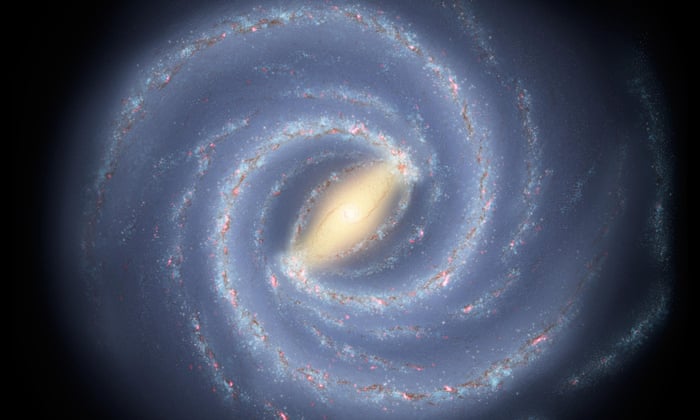Astronomers from Keio University, Japan, have observed what looks like the largest intermediate-mass black hole within the Milky Way. The object is estimated to weigh 100,000 times the mass of the Sun and is located near the center of the galaxy.
The study, published in Nature Astronomy, focused on a large molecular gas cloud almost 200 light-years from the center of the Milky Way. The team was able to study how the gas is moving, which is consistent with having a massive compact object at its center, which they named CO–0.40–0.22*.

The researchers also noticed how the emissions from the gas cloud resemble the core of the Milky Way, where the supermassive black hole of our galaxy is located, although 500 times less luminous. There’s also quite a difference in size as the Milky Way's supermassive black hole, called Sagittarius A*, is over 4 million times the mass of the Sun.
“This is the first detection of an intermediate-mass black hole (IMBH) candidate in our Milky Way Galaxy,” said the lead author Dr Tomoharu Oka. “This supports the merging scenario of the formation/evolution of supermassive black holes in galactic centers.”
The team already suspected the cloud hosted an IMBH, but this is the first detection of a point-like radio source. The new observations were possible thanks to Atacama Large Millimeter/Submillimeter Array whose sensitive antennas were ideal to pick up the extremely cold emissions of interstellar carbon monoxide clouds. The team compared the observations to numerical simulations of the gas cloud and they agreed with the idea of an intermediate-mass black hole hiding within. The team believes CO–0.40–0.22* to be one of the most promising candidates for an intermediate-mass black hole yet.
The discovery of potential new black hole is always an exciting affair but this is particularly important because it provides us with important clues to how supermassive black holes formed. Black holes form in supernova explosions but their size is very much related to their stellar progenitors. So how can black holes exist that are millions, if not billions, of times the mass of our Sun?
One main theory suggests that in the early universe black holes formed a lot more often because the stars were a lot bigger and burned through their fuel more quickly. These black holes would merge, eventually reaching hundreds of solar masses in size. At that point, they would merge with other similar sized black holes and become supermassive black holes.
The team is continuing observations of the source, and they hope that within just a decade of observations they'll be able to describe how it's moving across the galaxy and if it's going to merge with Sagittarius A*.
